The way into a story often comes in unexpected ways, as bit of kismet or synchronicity at work, I am convinced.
This morning I read on NPR ("An Unlikely Hit in an Imaginary Language") about Paul Kingsnorth's new novel, THE WAKE, about 11th century England after the Norman conquest. I was intrigued because the review talked about a made-up language. So I followed a few links to the Guardian, and one to Mark Rylance (who was Cromwell in PBS's WOLF HALL production) reading from THE WAKE.
And it was a wake-up call. OMG, I get it. My language is ALL WRONG with book three. Not that standard English isn't the way to go, not that I haven't planned to sprinkle in "groovys" and "far outs" and other counter-culture phrases... but I have been pursuing the wrong character altogether, which is why book three isn't working. Maybe.
I'm going to try a new beginning today, a new way in. Here is Mark Rylance reading from THE WAKE:
Viewing: Blog Posts Tagged with: richard preston, Most Recent at Top [Help]
Results 1 - 25 of 31
Blog: One Pomegranate (Login to Add to MyJacketFlap)
JacketFlap tags: book three sixties trilogy, influences, The Sixties Project, Add a tag
Blog: One Pomegranate (Login to Add to MyJacketFlap)
JacketFlap tags: the year of exploration, family, memories, home, reflections, celebrations, the aurora county all-stars, influences, each little bird that sings, REVOLUTION, love ruby lavender, Add a tag
I was born in Mobile, Alabama, while my dad was stationed at Brookley Field. He had gone off to the Korean War in 1951, just after he and my mother married, and now here I came, in 1953, on the heels of his return. We lived in Mobile for five years, until the Air Force transferred us to Hawaii. I have always claimed Alabama as the land of my birth, and I also claim Mississippi as home, as it was the land we returned to over and again as I grew up, and as my own children grew up, as my people were there. And so was my heart.
My mother was born in Mississippi and grew up in West Point, MS. My dad was born in Jasper County and grew up there. I grew up there, too, with the wacky grandmother who became Miss Eula in LOVE, RUBY LAVENDER, and the three maiden aunts who become Ruby's chickens, and all the cousins and aunts and uncles and a decaying town that is even more of a ghost today than it was when I was wandering its one main road and its cemetery and crossing the railroad tracks to visit Aunt Mitt and playing piano in the unlocked Methodist church.
Mississippi doesn't claim me, though. According to book committees who decide these things, I didn't live for five continuous years in Mississippi, so I am not in the club, even though I am a Mississippian by blood and by words.
This is a long story and one I hope to write about at some point, so I can figure out how I feel about choosing home. Home is in Atlanta today, of course, but home will always be where I've hung my hat: Hawaii, Maryland, D.C., South Carolina, North Carolina, Georgia.... and Mississippi as well. "What you know first stays with you." I am a Southern Girl, through and through. I am a human being with stories to tell. What does that mean?
Here's what it meant this week, as I took part in the first-ever Mississippi Book Festival, visited that family I love so much (Uncle Jim is our patriarch now, about to turn 92), and that place that defined me as a child -- and as a writer. Photos below of what becomes Aurora County in my books LOVE, RUBY LAVENDER; EACH LITTLE BIRD THAT SINGS; and THE AURORA COUNTY ALL-STARS.
And then there is my first book, FREEDOM SUMMER. I have never before posted pictures of the pool and roller skating rink that closed in 1964. The forest is claiming it now. I have taken photos there for many years, and have documented this abandoned place as it goes back to forest land. I wrote FREEDOM SUMMER -- and REVOLUTION -- to understand what happened. To keep this time and place alive, so we remember our history. So young people will know what it was like then. What it is like now.
Dispatch from Mississippi:
 |
| Picking up Kerry Madden along the way |
 |
| With Ellen Ruffin at the Eudora Welty house on Friday night at the author reception |
 |
| Kimberly Willis Holt, moi, Chris Barton, and Karen Rowell of USM. |
 |
| Jamie Kornegay and Turnrow Books in Greenwood, Mississippi has been such a staunch supporter of my books. Jamie's new novel is SOIL. "It has saturated the South!" Jamie says. |
 |
| Fuzzy photo of a bunch of us including Lori Nichols, Ellen Ruffin, Greg Leitich Smith, Susan Eaddy, Kerry Madden |
 |
| taking in all in. What a lovely evening. |
 |
| We had to turn people away, in Room 113 of the State Capitol, for the Young People's Literature panel. It was that way on all panels, all day. The turnout was tremendous. HOORAY! |
 |
| Pontificating. Which I am very good at. |
 |
| This is what it's about at a Festival. |
 |
| Chris Barton signing Shark vs Train and John Roy Lynch in the Lemuria tent. |
 |
| At dinner, Saturday night, with my loves. |
 |
| My son Jason with his Great-uncle Jim. Both of them jesters. |
 |
| Two more Jims: mine, and the cousin I have always called Bubba. |
 |
| If you're a RUBY fan, you recognize this sign! |
 |
| Kerry listens to Merle's stories. Merle now owns my grandmother's house (The Pink Palace, in the background). |
I will never live long enough to write all the stories asking for my attention. They claim me. And for that I am grateful.
Blog: One Pomegranate (Login to Add to MyJacketFlap)
JacketFlap tags: research, influences, 48 days, Add a tag
{{ I am chronicling 48 days of writing before my July 31 travel. If you are chronicling your summer writing/days and would like to share, please link or comment so we can all cheer one another through. Strength to your sword arm! }}
Blog: One Pomegranate (Login to Add to MyJacketFlap) JacketFlap tags: inspiration, home, ideas, influences, finding stories, book three sixties trilogy, the home economics project, the year of exploration, Add a tag For some time I have been birthing -- in my head and on paper -- a new way of seeing, working, living, connecting, and being in the world. Why? Maybe it's turning 60, with the knowledge that there is less time before me than behind me for sure. Maybe it's recent disappointments and realizations. Maybe it's recent gifts and surprises. Maybe it's the on-going therapy, which is hard work. I'm sure it is. Whatever it is, this shift in my thinking feels major, so I'm going to do something about it, and I will chronicle it here, March 20, 2015 to March 20, 2016 (start where you are, and I started with Saturday's post). I want to see where this new energy and commitment take me and my work. I'll also Instagram my explorations, using the hashtag "theyearofexploration." I'll label it that way here, too. I used the blog to chronicle my 2012 year off the road to finish REVOLUTION and called it "the year of possibility." You can read about it by clicking on the label on the sidebar. (or here. :>) I'll tag some of these exploration posts "the home economics project." I've had a project in mind for a long, long time, and I want to start making it visible. I'll chronicle book three of the sixties trilogy as well. I've already starting documenting photographs and research at Pinterest. You'll find a "book three hold file" and a "book three playlist possibilities" board as well as the many boards for COUNTDOWN and REVOLUTION... and I've started resource boards for my other books.. I'll get to them as I can. I'm going back to the roots of what makes me happy. I'm going to write more. I'm going to use my hands more, which is something that grounds me and centers me and helps me understand my place in the great continuum. To that end, I have purchased four cacti, three French lavender plants, and a mother fern. I'm going to take a class at Creativebug - line drawing with Lisa Congdon. Also, Lisa's sketchbook explorations work-along at Creativebug. I've got my supplies (which include these plants!) and I'm ready to go. I have no expectations. I want to do what I ask students to do when I teach writing: pay attention, ask questions, make connections. I'll be an explorer like Comfort Snowberger in EACH LITTLE BIRD THAT SINGS: Explorer, Recipe Tester, and Funeral Reporter. Like Dove, the 9-year-old anthropologist-in-training in LOVE, RUBY LAVENDER. I shall be an anthropologist of my life. I'll try to let go of anxiety about the future, and just stay in the day. I will work hard. I will try to uncover as well as discover. I hope to learn a lot. Wanna come with?
0 Comments on the year of exploration as of 3/23/2015 12:37:00 PM
Add a Comment
Blog: Miss Marple's Musings (Login to Add to MyJacketFlap) JacketFlap tags: artists, biographies, influences, Henri Matisse, Perfect Picture Book Friday, Hadley Hooper, Patricia MacCalchlan, Add a tag Title: The Iridescence of Birds – A Book About Henri Matisse Written by: Patricia MacLachlan Illustrated by: Hadley Hooper Published by: A Neal Porter Book, Roaring Book Press, 2014 Themes/Topics: Henri Matisse, painters, the influence of childhood, France Suitable for ages: 5-11 40 pages, … Continue reading Add a CommentBlog: WOW! Women on Writing Blog (The Muffin) (Login to Add to MyJacketFlap) JacketFlap tags: craft of writing, creative writing, teacher, influences, Elizabeth King Humphrey, Add a tag
Were you born a creative writer or were you taught to be a creative writer? I picked up a copy of the September issue of The Writer’s Chronicle, a publication for the Association of Writers & Writing Programs. It’s a publication I read often when I was getting my MFA in creative writing. One article immediately drew my attention: “Borges as Self: Toward Teaching Creative Writers” by Eric LeMay. There is a line in the article, which I will paraphrase, that poses the question about whether creative writing can be taught or can students be taught to be creative writers. The article discusses various programs and what they may offer writers. But when I read that, I didn’t look back on my master’s program. I didn’t reflect on an undergraduate poetry class with Kenneth Koch or a graduate workshop with Denise Gess (both incredibly passionate writers). I immediately thought of my high school English teachers. And one in particular: Marilyn Griggs Riley. To my knowledge (okay, to my memory!), she didn’t teach me anything about creative writing. I don’t remember the whys and wherefores of points of view or how to create suspense in a novel. But Marilyn taught me a lot. She taught me about a love of writing. She opened a world of writing that I had never seen before—she wrote the introduction for poetry collections and, later in life, penned a collection of profiles of spunky Western women. Areas for writing that I hadn't considered before. Her enthusiasm didn’t teach me the craft of writing. Her Carol Channing hairstyle didn’t convince me to become a writer (or even influence my style choices). Her enthusiasm helped me to discover writers I wanted to identify with—and could. Her passion and laughter and encouragement helped me to feel that writing—and being a writer—is an important skill/job/vocation/life. We kept in touch even after I graduated and she remained a wonderful cheerleader and a fantastic teacher. In my mind, writers can be taught. Writers can even be taught to be creative writers. But passion is a lot harder to come by. But when you have a teacher who is passionate and believes in you, you can become anything you want to be. Including a writer. I enjoyed LeMay's article because he made me think about those personal connections with teachers and their many influences throughout the years. Do you have a teacher who helped move you to become a writer? Is there someone whose passion set you on the writerly path? Who was he or she? Elizabeth King Humphrey is a writer and editor living in Wilmington, NC. Her kids just started back at school, so she is excited for a bit more free writing time. (Ha!)
2 Comments on Influential Teachers, last added: 9/8/2012
Display Comments
Add a Comment
Blog: JohnnyMackintosh.com (Login to Add to MyJacketFlap) JacketFlap tags: wizards, Sorcerer's Stone, Tibor Fisher, space, Harry Potter, magic, football, dreams, Science, gadgets, Writers, Boston, Irvine Welsh, Deathly Hallows, aliens, Influences, JK Rowling, Paul Auster, Iain M Banks, Jo Rowling, Battle for Earth, House of Blues, Iain Banks, Addison-Wesley, Chamber of Secrets, Goblet of Fire, Harry Potter quiz, Philosopher's Stone, Prisoner of Azkaban, Add a tag
Some people might have heard the story of how I came to begin reading about the boy wizard from Godric’s Hollow, but for those who haven’t here goes. Of course as a publisher I’d heard about Harry and his creator JK Rowling, but I figured he was for kids and I had no interest whatsoever in books about witches and wizards and magic and broomsticks, even though the buzz about this remarkable creation wouldn’t go away. I was working for a company called Addison-Wesle In hindsight it’s obvious. At the time, as you can see, I wore ridiculous round battered glasses, had black messed up hair, spoke with an English accent and (though I normally cover it under mounds of foundation) I do actually have a lightning-shaped scar on my forehead. Then there are all the mad things that seem to happen when I get angry, but that’s another story… The next day I found and bought Harry Potter and the Sorcerer’s Stone at Logan International Airport and read it on the flight home. Curiously, although I may have read all the Harry Potter books 20-40 times, I’ve still never read the Philosopher’s Stone version of book one where it all began. At that time Harry Potter and the Chamber of Secrets was also published so I bought that at Heathrow Airport on the way home, and Prisoner of Azkaban soon followed. I loved this world that the woman who was to become my writing idol had created. It’s a tribute to her that she could even make things like magic and dragons and Quidditch sound interesting. But most of all it was what we call the voice of the books, and the cleverness of telling everything from Harry’s point of view, even when he got the wrong end of the stick.
Blog: JohnnyMackintosh.com (Login to Add to MyJacketFlap) JacketFlap tags: Babylon, Battle for Earth, The Railway Children, The story of the amulet, Writers, time travel, dinosaurs, Influences, Atlantis, Add a tag
The book features some brothers and sisters who acquire an ancient amulet that will apparently give them their hearts’ desire – to be reunited with their parents. But there’s a catch. They only have half the amulet and only when whole will their wish come true. But there’s hope because the amulet can form into an arch through which you can cross time and space. Sound familiar? Of course Clara Mackintosh is always creating such archways, which she models on the Arch of Lysentia that she and brother Johnny pass through in the Spirit of London.
*****SPOILER ALERT – DO NOT READ UNLESS YOU’VE FINISHED JOHNNY MACKINTOSH AND THE SPIRIT OF LONDON******* Along the same lines, something that always stayed with me was when the protagonists travelled to Atlantis. They were there right at the end of the legendary city and escaped through the amulet’s arch just in time. This was very much my inspiration for having Johnny and Clara visit Atlantis and do a very similar thing. And another example, similar to Nesbit’s weaving in the Babylonian coinage, was the way I had Johnny wipe out the dinosaurs by accident, being responsible for diverting an asteroid onto a collision course with Earth. ***********END OF SPOILERS****************************** There’s so much great new writing nowadays that it can be easy to forget the classics of the past, but Edith Nesbit was a great writer and definitely deserves to be read and remembered. She also wrote The Railway Children, which is always being performed on stage or serialized. Tomorrow though, I’ll bring us right up to date with unquestionably the biggest influence on Johnny Mackintosh and the publishing phenomenon of recent times. Blog: JohnnyMackintosh.com (Login to Add to MyJacketFlap) JacketFlap tags: television, Writers, David Tennant, Influences, Jude, Blink, Tom Baker, Battle for Earth, A Good Man Goes to War, Audrey Niffenberger, Christopher Eccleston, Headless Monks, John Pertwee, Matt Smith, Owlessan Monks, Planet of the Dead, Royal Television Society, Spoace 1999, The Girl in the Fireplace, Add a tag
I grew up with Dr Who, John Pertwee being my first Doctor but Tom Baker the main and best one from my youth. Although there was a time when the ridiculous TV schedulers put it up against Gerry Anderson’s Space 1999 (Moonbase Alpha won that particular battle for me way back then) I’ve watched Who pretty much all my life when available. The paperback of Johnny Mackintosh and the Spirit of London contains all sorts of time travelling adventures, and my publisher Quercus even referenced Doctor Who on the cover (we’ll swiftly gloss over the mention of Alex Rider).
For Who trivia fans there’s a great scene in the movie Jude (starring Eccleston as the title character) where the man Jude is drinking in an Oxford bar. He’s slagging off the Oxford scholars and ends up in a slanging match with one such, none other than Tennant himself. While Tennant’s character fits effortlessly into his surroundings, Eccleston’s Jude is deliberately awkward and it’s always reminded me of their respective Doctoral personas. Perhaps it’s a precursor to Moffat doing one of those Five Doctor specials with everyone returning to save the universe from a particularly thorny problem?
Blog: JohnnyMackintosh.com (Login to Add to MyJacketFlap) JacketFlap tags: television, Space, Influences, Zen, Orac, Liberator, Brian Blessed, Gareth Thomas, Kerr Avon, Kovac, Paul Darrow, Star One, Add a tag
In a dystopian future, Earth is ruled by the oppressive Federation. People live in domed cities, controlled by drugs (if I recall). There was a small but growing resistance but its leader and figurehead, Roj Blake, was captured years before. This is all dimly remembered, but the series opened some time after Blake had been subjected to all sorts of brainwashing/mind control techniques to try to make him confess and announce to the world that the Federation were the good guys after all. He’s been released back into society to lead the life of a regular good citizen, but a new resistance finds him and reveal the truth. His memories return and the Federation has no choice but to recapture him and put him on trial. Along with several other Federation prisoners he is sentenced to a life in exile off-world, and is transported to a penal colony on a faraway planet run by Brian Blessed.
His craft was to become one of my all time favourites, the Liberator (pictured). The ship was far in advance of any other vessel, incredibly fast and with its own teleport system. It also came
While it was being broadcast, Blake’s 7 was absolute must-watch TV and the first show where I really appreciated the quality of the writing and the story arc across a whole series. The final episode of series 2 (entitled Star One) was one of my favourite all-time moments when Blake discovers an alien invasion of the galaxy is imminent. He’s wounded trying to protect the Milky Way’s defences. Faced with a terrible choice, the remaining crew of Liberator (now commanded by Paul Darrow’s magnificent anti-hero Kerr Avon) make the terrible choice to join forces with the Federation to try to defend the Galaxy. Waiting for reinforcements to arrive, the aliens are breaking through and the final piece of dialogue of the series is Avon saying, “Fire”. The show ended after four Add a CommentBlog: JohnnyMackintosh.com (Login to Add to MyJacketFlap) JacketFlap tags: Culture, Writers, eclipse, Influences, Transition, solar eclipse, Iain M Banks, Seti, alien hunting, cousin Verity, General Systems Vehicle, GSV, Iain Banks, Look to Windward, The Crow Road, Whit, Add a tag
Banks’ Culture novels are the most compelling modern fiction I know of. They present a utopian future of enlightened humanoids at pretty much the highest level of galactic civilization without “subliming” – the act of moving on to the next plane of existence. Some of Banks’ books are under the moniker Iain Banks while others are written as Iain M. Banks (his middle name is the uber cool “Menzies”). I believe Banks regrets the distinction that was foist upon him in the early days of his writing. Publishers (I should know because I am one) are always trying to classify books and identify the correct market. I suspect his didn’t want people not buying future novels “from the critically acclaimed fiction of the author of The Wasp Factory” because they might turn out to be science fiction (heaven forbid). What are known as “genre” books can often get a very raw deal from publishers and critics. I’m sure Banks believes his Culture novels would be a good read for anyone, just as I’ve always said the Johnny Mackintosh books are aimed squarely at a general audience and not hard-core sci-fi fans. In fact, the Culture books are the only science fiction I’ve read since I was a kid. I remember one reviewer saying of Johnny Mackintosh and the Spirit of London that it was reminiscent of “Asimov, Clarke, Moorcock and Dick” which I thought great only for the review to continue that these authors were “totally out of vogue now”. I’ve lost count of the times people have said to me, “I don’t normally read/enjoy science fiction, but I love your books” while sci-fi fans appear nowadays to be looking for something else. Back to the Culture. Banks’ novels take place at the boundary of the Culture’s influence – the society itself is so stable that any story rooted in it would most likely be pretty dull. Everything’s good and there’s no conflict of note. Instead we tend to read about their equivalent of the Foreign Office, a body called Contact, and their division that performs dubious activities of questionable legality to ensure society and the wider galactic civilization function as they should: Special Circumstances.
Blog: JohnnyMackintosh.com (Login to Add to MyJacketFlap) JacketFlap tags: television, Science, Writers, Space, Influences, Jodie Foster, Contact, science communication, Anasazi rock, Bram Khari, Brian Cox, Pioneer 10, spaceship of the imagination, Wonders of the Solar System, Wonders of the Universe, Add a tag
The very first episode of Cosmos should have hooked anybody:
Here was a scientist who was also a poet – a slightly cheesy poet maybe, but definitely a great communicator of “awesome” ideas.
I always felt meeting Sagan was a highlight of my time at Cambridge University. He came to give a talk on the new theory of nuclear winter, the idea of which had come out of studying volcanoes on Mars. Afterwards I spoke to him and he signed by (battered) copy of Cosmos that I’d taken along. When Brian Cox first started doing his Wonders of the Solar System TV programme I was determined not to like it because I thought nothing could compete with Cosmos, but I quickly changed my mind when I saw how superbly put together Wonders was – not another dumbed down trite computer-graphics-laden programme but something of real substance, and I could see Sagan’s influence shining through. I first met Cox at the Royal Society and we talked about our shared love of Cosmos. Later, in the second series of Wonders, I found it funny to see that the Manchester and CERN professor had carried his battered copy of Cosmos on location and referred to the photograph of the Anasazi rock painting, possibly depicting the supernova of 1054, that he’d first seen on this wonderful TV series from the 1980s. Sagan didn’t only write and present nonfiction – though we should remember his fact was often far more extraordinary than most made-up traveller’s tales. If you ever saw the Jodie Foster movie Add a CommentBlog: JohnnyMackintosh.com (Login to Add to MyJacketFlap) JacketFlap tags: Writers, Influences, Foundation, laws of robotics, Foundation and Empire, Foundation Trilogy, galactic empire, Lucky Starr, Psychohistory, Second Foundation, The End of Eternity, Trantor, Add a tag
My local library contained copies of a series of books about a young Earth hero called Lucky Starr who was always saving Earth from the upstart human colonists of Sirius – as part of their plans for galactic expansion these Sirians wanted to return to take over their homeworld. Nowadays I don’t remember much of the stories, apart from some legalistic dispute over control of the Jovian system (or was it Saturn?) and I’m pretty sure that, even here, the books contained Asimov’s famous Laws of Robotics. Where the great man came into his own and his ideas stayed with me was the Foundaion Trilogy. I say “trilogy” – there are officially seven books but two prequels and two sequels were written later and in my opinion should be avoided. Far better to stick to the original three: Foundation, Foundation and Empire and Second Foundation. There’s a key idea in the books that concerns a mathematical theory of human behaviour. “Psychohistory” of which the greatest protagonist is Hari Seldon, is like a kinetic theory of gases for human beings – gather enough of us together (and the starting premise of the books is that humanity has colonized the entire galaxy so there are lots of people) and the overall, en bloc behaviour becomes statistically predictable. It’s an idea that always appealed to my own mathematical sensibilities – in my teenage years I thought long and hard about how it might work in practice. Asimov is aware of its potential flaws and cleverly builds them into the plot. The book begins in the final centuries of galactic empire (although this demise isn’t obvious to the vast majority of the galaxy’s inhabitants). What Seldon did was to apply the equations of Psychohistory to predict the fall of Empire and a thirty-thousand-year period of anarchy – an equivalent of our Dark Ages – before a galactic civilization could reassert itself. It was too late to prevent the fall but by creating the Foundation on the rim of the galaxy he could cut those in-between times to just a single millennium. *********SPOILER ALERT – do not read unless you have finished both Johnny Mackintosh and the Spirit of London and Johnny Mackintosh: Star Blaze********** The original settlers of the Foundation, believers in Seldon’s vision, were mainly scientists. Resources were deliberately kept scarce, forcing them to improvise and innovate. They created a device that features in my own stories – a personal shield. Something to wear around your neck that will protect you from blaster fire. In Asimov’s books these become the stuff of legend, and I wanted the same for mine. ***********END OF SPOILERS************ A second element I borrowed from the Foundation trilogy was the galactic capital. My Melania is similar to Asimov’s Trantor, in that every square inch of the planet has been built upon. In fact, Melania has an artificial second skin. On both worlds the only piece of greenery where natu Add a CommentBlog: One Pomegranate (Login to Add to MyJacketFlap) JacketFlap tags: love, inspiration, influences, Add a tag
I still miss her. The house has not sold. Last time I was inside, it was after a funeral. Sometimes I want to buy the place. Mostly I want to remember. Miss you, Daaahlin'.
1 Comments on you knew I'd have to come, last added: 5/20/2011
Display Comments
Add a Comment
Blog: One Pomegranate (Login to Add to MyJacketFlap) JacketFlap tags: home, influences, making a living, living in atlanta, book two sixties trilogy, Add a tag
Got home from Tennessee travels late Friday night -- shout outs to my good friend Scot Smith, his colleagues, and all 7th graders who are working on a truly amazing Countdown project at Robertsville Middle School in Oak Ridge. Thank yous as well to Jo Wilson and her team at Eaton Elementary in Lenoir City for an amazing hour with 3rd and 4th graders who have read the Aurora County trilogy and Freedom Summer, and to all teachers and students at Grandview School in Jonesborough, Tennessee, for a memorable teacher workshop day and another day with students in grades PRE-K through EIGHT. Whatta stretch. And it was good. Got my hair cut yesterday. Talked with Vincent about working with our hands. I talk about this a lot lately. It's part of what I'm trying to put into words in my new novel, book two of the sixties trilogy, and into a new project I'm cooking up. Again, stay tuned. :> I made a commitment this year to work more with my hands. I talk about it all the time in schools. I preach about it, actually, about how we have to use our notebooks (Totally paperless classrooms? Aiiieeeee! At our peril!), and keep teaching handwriting and cursive and drawing and doodling and pasting and cutting and taping and knitting and cooking and gardening and sweeping and painting... I finished Abby's Tiramisu late yesterday afternoon. (Ravelry notes here.) As I wove the ribbon through the border spaces and watched the whole thing come together, finally, I was filled with the delight of "I made this! With my own two hands! And it's beautiful!" I love that feeling. The beauty lies in the process, in the effort, and also in the finishing. It's like that with writing as well. I've been teaching lots of teachers this spring, and that's what we've been working with -- process, effort, finishing. This is the investment. Blog: One Pomegranate (Login to Add to MyJacketFlap) JacketFlap tags: influences, Add a tag
Ohmygolly, y'all. I have had such amazing mail in the 24 hours since I last posted... who knew how many of you felt this way, too, and understood that deep desire to live an authentic life, a life not made to someone else's order? My favorite lines: Consider this: The world approaches you like an ugly beggar and begins pawing through your backpack. So you resist. The world wants something. It just doesn't have a very nice way of going about it. It grabs for things you think are sacred. You resist. It grabs for things you think are worthless. You resist. You say, that's worthless, you don't want that. But the world keeps pawing through your backpack. And: The world may not want what you think is your greatest talent. So we learn that we are not the best judge of what we have to offer. We learn that if we simply adopt a posture of service, the world will let us know.... Shift your perspective. You're not running the show. And: What we express does not originate inside us. What we express we pass on. We borrow. We are conduits. This yearning, this is not from inside you. It is your response to an invitation.... The world is trying to pull something out of you. Let the world pull this thing out of you. Let the world act on you. Me again: What I express does not originate inside me. I am not running the show. I am letting go, remember? I only run the show to the extent that I can say YES to what has opened in front of me, instead of resisting it. YES to seeing where it takes me. YES to loving-kindness and curiosity and open-ness and willingness to make myself available. To find out who I really am. That's the entire struggle, in my opinion. All of life is a journey home. Home to our true selves, our true nature, our connectedness. We do nothing alone. What is your invitation? What is the world offering you right now? That is the question. How wonderful to be able to look the world in the eye and say, "Here I am. Where to?" And then to go at the pace you can travel. My pace yesterday was... slow. I could have stayed with chapter three, but it was fidgety, finicky, and fussy. Jim texted me from his last break at his Valentine's Day gig at La Grotta: "I'm dead." He had worked three gigs yesterday, playing and singing, and I knew he was done-in. I texted back: "You're almost done. I'm making you something!" And I closed my laptop. I finished these pans of brownies at 11pm. They were supposed to look like this, but I couldn't face doing the entire pan in that way at 11pm, so this was my concession. Blog: OUPblog (Login to Add to MyJacketFlap) JacketFlap tags: Health, teaching, Religion, Education, Science, A-Featured, Western Religion, faith, influences, scientists, university, morals, colleagues, Elaine Howard Ecklund, teaching classroom, ethos, physicist, Add a tag
“My Faith is Simply Part of Who I Am” About 39 percent of the nearly 1,700 scientists I surveyed considered their religious or spiritual beliefs influential on their interactions with students and colleagues. Specifically, faith can create an ethos for teaching. In other words, the faith of these scientists is a part of their everyday lives to the extent that they see it shaping the what, how, why of their teaching. A Catholic chemist was especially forthcoming about his religious views after I turned off my tape recorder. A recent immigrant, he thinks that academics (and Americans in general) should talk more openly about religion and integrate it into their lives. He blames the present unwillingness to discuss religion on what he called the “political correctness” of the United States, which he contrasts with the religious discussions people have in his home country. Although he clearly had outspoken views about public discussions of religion, this scientist explained that at work, his faith influences him primarily through the ethos it provides for teaching: “I would say religion itself doesn’t come up, rather the values I get through religion…As a teacher you have, for example, a little bit more regard toward weaker students and trying to help them out and also communicate to them the joy of studying science.” Here, he explicitly contrasted himself with more secular colleagues who he thinks mainly spend time with the better students. Similarly, a physicist said that his faith causes him to treat those who work in his lab compassionately, going out of his way to do things for them that do not necessarily benefit his own career. In his words, “I’m at an age where I see mentoring as one of the most important things I can do,…trying to get [younger scientists] on paths that will get them to the jobs that they want. And you know there’s no particular self-interest here. I mean the majority of [other scientists] I don’t think do this.” This physicist is also establishing a clear boundary between himself and his colleagues who, in his sense of things, care more about their own personal success than making sure that students are mentored well. Obviously, nonreligious professors might also mentor students well. The point is that religious scientists often mentioned this ethos of teaching as something that they believed separated them from their secular colleagues. The Jewish economist…also said that his faith has a great impact on how he cares for students. He remembers his mother lighting candles on Friday evenings, a ritual that left him with “very peaceful imprints.” And this knowledge that he belongs to a broader faith community influences, for instance, how he thinks about promoting character development among his students, such as those who have failed a class. These students might then meet him in his office to request a higher grade: And I say, “Well close the door and let’s talk now. Aren’t you ashamed to be here? What do you want out of life when your parents are spending money to keep you here? Are you really interes
0 Comments on Science vs. Relgion as of 1/1/1900
Add a Comment
Blog: One Pomegranate (Login to Add to MyJacketFlap) JacketFlap tags: writing, reflections, influences, The Sixties Project, book two sixties trilogy, countdown., Add a tag
"Portulaca in pie pans was what they set along the front porch. And the mirror on the front of the house: I told you. In the yard, not a snap of grass -- an old auto tire with verbena growing inside of it ninety to nothing, all red. And a tin roof you could just imagine the chinaberries falling on -- ping! And now the hot rays of the sun." The book was published in 1954, when I was a year old. I found a paperback copy of it in a used book store in Front Royal, Virginia, when I was in my thirties and trying to write for children. The book was pubished for adults, but I found this copy in the children's section -- lucky me. I have read this book so many times, I have broken the spine. I have underlined passages and just about memorized stretches of this story. I took it apart, and learned from it, as I tried to write stories of my own. "How does she do that?" Today, I am convinced that the June family, the family I have created in Hang The Moon, the second book in The Sixties Trilogy, owes a lot to the Peacock family in The Ponder Heart. They aren't the same, not by a long shot, but... they are, in their crazy southern way. I hear echoes today, and I recognize a legacy being passed down because Eudora Welty wrote and published this book, and I reached out and said yes, I love this, I want this, I want to learn; teach me. I didn't see this as I wrote the draft, which I started in the mid-nineties. But I see it today. What an influence Welty has been on my work. Influences. Do you know yours? Who and/or what are they? Can you see them in your work, whatever kind of work you do? Name them out loud today. It will give strength to your sword arm. And maybe, portulaca in pie pans. (I know; it's a cake pan. I revised. :>) I'm headed to Knoxville, this minute. Tomorrow I work at the Knoxville Children's Festival of Reading at World's Fair Park. I speak at 11:30 and again at 2:00. Come see me! I'll be talking about influences, for sure, as I introduce Countdown to a brand-new audience in Tennessee. I am doing the same thing Welty did, in my own way: I am releasing my book, my tender story, into the wide world, not knowing who may need it now, or who might, years after I am gone, come across a dusty old paperback in a used bookstore one day, and say... yes.
3 Comments on portulaca in pie pans, last added: 5/24/2010
Display Comments
Add a Comment
Blog: One Pomegranate (Login to Add to MyJacketFlap) JacketFlap tags: influences, notebooks, writing prompts, writing, Add a tag
I'm going to write about my biggest fear with Hang The Moon, the second book in the Sixties Trilogy, but I can't do it today. My friend and mentor died on Friday, and she is part of this Hang The Moon story, so first I want to tell you about her.
3 Comments on norma, last added: 10/22/2009
Display Comments
Add a Comment
Blog: One Pomegranate (Login to Add to MyJacketFlap) JacketFlap tags: reflections, influences, living in atlanta, Add a tag
When I was in my twenties, I wanted to write essays, so I went to the library and read my way through the 800s -- particularly the 814s -- and fell in love with White, Thurber, Perleman, Goodman, Didion, Trillin.
0 Comments on celestine and me as of 8/10/2009 9:00:00 PM
Add a Comment
Blog: One Pomegranate (Login to Add to MyJacketFlap) JacketFlap tags: The Sixties Project, writing, process, influences, notebooks, The Sixties, personal narrative writing, 30 days of process, Add a tag
Word assoc. with CMC what? FearInvisible DrillTie the explorers and fifth-grade exploration unit, note taking, etc., into the narrative. Note-taking some of the letters, memos? Franny writes like that?Explorers discovering new lands, vs lands about to be annihilated with atomic war. MAKERS OF THE AMERICAS has balboa and also cuba in it. Copyright 1947 What about textbooks having incorrect information? Howard Zinn, the people’s history of the united states, etc.A kid will move in across the street who brings Franny down a notch and teaches her that she is special without being special. Deflates her ego but shows her the truth. No. JoEllen is a mentor. Magician, whatever.LOSING BATTLES, no exposition. Can I do this? Absolutely true diary remember that novel. What I am writing is highly autobiographical.Just found out Franny is the new kid.My weekly reader, current events Guns of navarroneWar of the worlds Franny will be 11 and in fifth grade, and it will be 1962. I’ll start in Sept.Was trying to make her 12 in 1962 and in sixth grade, but it’s not going to happen, this feels better. Oct. 9 2008On my trip to kudzu HALLOWEEEEEN! Was talking with meg at kudzu this afternoon about Halloween and our childhoods and I told stories about my children’s childhood and the fire at the end of the driveway and everything… what about Franny and Halloweeen might be impt. I have had this thought before but abandoned it. Now it feels just right.On my walk tonight: GALE is not a bad girl, although Franny’s mother thinks she is… and Franny will find this out… hmmm… defy her mother? Gravel pit? What? So maybe franny and Margie don’t break up, but they have a tough time of it over gale and Margie growing up faster, gale already grown up a lotHalloween: noisemakers from the fifties/early sixties, costumes, card table and old woman (work this in somehow with fear)Halloween party at school? Maybe gale’s mother DIDN’T allow her out on beggars night, maybe Gale’s mother works nights and Gale just went out on her own. Gale can be racy but not bad… risky but not ridiculously so. Maybe her mother is separated or divorced… a no-noin the early sixties. Mom, can I sleep with you tonight? Dad’s out of town on a trip. Mom will pick him up at Friendship and JoEllen will babysit. What about uncle otts?Franny’s mother, Nadine, is Miss Mattie’s daughter. So she is Evelyn Lavender’s sister and Ruby’s aunt. That makes Franny and Ruby cousins. Ha! Drew wants to sleep with mom, too, but it’s franny’s turn. Does she hear him sniveling in bed and how does she feel about that? Does she go into his room and comfort him? Sleep with him in a twin bed? Army men are everywhere? They can still fight later.Oh, I should use those caterpillars! And locking drew out of the house/shed thingie! Can be little flashbacks… to first snow, and etc. the way I did Uncle Edisto and Aunt Florentine flashbacks. This can be a good story. Oct 10 New kid moves in across the street woody with raccoon goads drew? Gravel pit? Now drew has a friend his age in the neighborhood?Is gale jewish? Does she not show up for school for rosh Hashanah and yom kippur? Finish notebook entry.------------------------------------ This is my process now. The story is revealing itself to me, bit by leap. I am scooping it up. My notebook goes with me everywhere, to record what is being revealed, to ask questions, to practice what-if, to capture tiny fragments as they present themselves. And yes, this far into this novel (years worth!), I am still uncovering layers of meaning and structure. This is the way it is with every novel, for me. I've come to believe that I push a novel at my peril. In some ways, I don't believe I can push it to reveal to me its secrets. I just have to keep showing up at the page, whether it's the laptop or the notebook, the slog or the white-heat. (I like white-heats a lot better.... insert hollow laughter here.) Nothing is too small to note. Nothing that doesn't work out is wasted. It is all necessary to the whole and to the finished project. This is why I tell my students, keep a notebook. Put everything in it. Everything. You never know when you may need it. Paste leaves in it and photographs. Clips recipes to it and letters. Draw pictures, scribble, pour your heart out, and you will see: There it is, on the page: your voice.
0 Comments on The Story Gives Up Its Secrets as of 10/10/2008 1:34:00 PM
Add a Comment
Blog: One Pomegranate (Login to Add to MyJacketFlap) JacketFlap tags: influences, each little bird that sings, personal canons, Add a tag
0 Comments on Me and Crispin's Crispian as of 8/5/2008 8:46:00 AM
Add a Comment
Blog: One Pomegranate (Login to Add to MyJacketFlap) JacketFlap tags: memories, influences, personal canons, Add a tag
7 Comments on First Influences, last added: 8/18/2008
Display Comments
Add a Comment
Blog: One Pomegranate (Login to Add to MyJacketFlap) JacketFlap tags: writing, inspiration, memories, ideas, process, influences, notebooks, The Sixties, Add a tag
0 Comments on I Know A Place as of 1/1/1900
Add a Comment
Blog: OUPblog (Login to Add to MyJacketFlap) JacketFlap tags: Current Events, anorexia, A-Featured, Medical Mondays, Media, Psychology, Spain, influences, guidelines, Anorexia Nervosa, Franch, models, thinness, nervosa, extreme, conveyed, Health, Add a tag
The French parliament’s lower house recently adopted a bill that would make it illegal for anyone to promote extreme thinness. The bill is aimed at magazines, advertisers, and particularly Web sites. Pro-anorexia Web sites (also known as pro-ana) glorify anorexia as a lifestyle choice rather than an illness. They are popular sites that advise teenagers and young women how to maintain extreme thinness. They are frequented by anorexics who share their experiences and advise one another about unhealthy practices. This latest move by the French parliament comes after a Spanish fashion show banned models with a body mass index of less than 18, indicating waif-like abnormal thinness. This was a reaction to the 2006 death of the top Brazilian model Ana Caroline Reston. She weighed only 88 lb. at 5’ 8” and had suffered from anorexia and bulimia. In the U.S. the Council of Fashion Designers of America adopted guidelines for its models to be healthy, not anorexic or bulimic.
There are many factors that lead to anorexia nervosa. First of all there is a biological predisposition with a genetic basis. Further, the individual developing anorexia nervosa has certain personality characteristics including willful determination and persistence. Individual psychological influences also play a role. Finally, there are the cultural influences, glamorizing extreme thinness. Thus, there is usually no single cause, but a combination of influences that lead to anorexia nervosa. Of these, the cultural influences would seem most easily to be altered, but would require a wholesale change in our society’s attitude, in advertising, and in the messages conveyed by the media. It is naïve to think that a law will prevent anorexia nervosa. Any efforts, however, to establish healthy guidelines for models could protect them from excessive dieting. Healthier role models would also send the message to teenage girls that extreme thinness is not fashionable.
0 Comments on When Can You Say Thin Is Too Thin? as of 1/1/1990
Add a Comment
View Next 5 Posts |






























 Most of the entries in this series of things that have impacted on the Johnny Mackintosh books have been either science fiction or science based. I have though saved the biggest influence until last and it comes from another world, but one which many readers will know well:
Most of the entries in this series of things that have impacted on the Johnny Mackintosh books have been either science fiction or science based. I have though saved the biggest influence until last and it comes from another world, but one which many readers will know well: 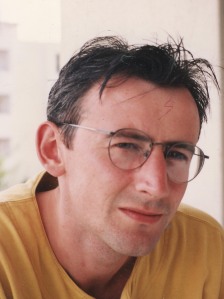 y
y
 One of the great things about books is how long they last. We’re still able to read stories from thousands of years ago, many of them being continually remade as films or television stories. One book that made a lasting impression on me as a child was something that was written over a century ago:
One of the great things about books is how long they last. We’re still able to read stories from thousands of years ago, many of them being continually remade as films or television stories. One book that made a lasting impression on me as a child was something that was written over a century ago: 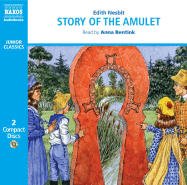 What was great about the stories was how the children affected time through their travels. For instance, I think when they were being held prisoner in ancient Babylon they showed their prison guard a twopence piece and that was apparently how the Bablyonians came upon the idea of a minted coinage/currency.
What was great about the stories was how the children affected time through their travels. For instance, I think when they were being held prisoner in ancient Babylon they showed their prison guard a twopence piece and that was apparently how the Bablyonians came upon the idea of a minted coinage/currency. Unless you’ve been living on Mars the past few years, you can’t help but have been sucked into the hype surrounding the reboot of the
Unless you’ve been living on Mars the past few years, you can’t help but have been sucked into the hype surrounding the reboot of the  When I first heard Eccleston was leaving and Tennant was taking over, I was very disappointed – how wrong was I? For me, David Tennant now bestrides the Who universe as the greatest of all Doctors, not least because he so clearly loved the role when it always appeared Eccleston felt a little above it.
When I first heard Eccleston was leaving and Tennant was taking over, I was very disappointed – how wrong was I? For me, David Tennant now bestrides the Who universe as the greatest of all Doctors, not least because he so clearly loved the role when it always appeared Eccleston felt a little above it. Although Russell T Davies was the man who brought Who back onto the small screen, many people would say it was the writing of Steven Moffatt tha
Although Russell T Davies was the man who brought Who back onto the small screen, many people would say it was the writing of Steven Moffatt tha
 For those who don’t know, Blake’s 7 was a British science fiction television series in the late 1970s/early 1980s. At the time I thought it was the greatest TV show anyone could have conceived.
For those who don’t know, Blake’s 7 was a British science fiction television series in the late 1970s/early 1980s. At the time I thought it was the greatest TV show anyone could have conceived. Something goes wrong. The relatively primitive Earth ship (in fact called the London) is damaged, finding itself in the middle of some kind of interstellar war between far more advanced civilizations. And one of the advanced ships is found drifting nearby. A few members of the Federation crew tries to board it but all succumb to a terrible fate so next some of the prisoners were sent over. Blake, now aware of how to prevent tricks being played on his mind is able to overcome the ship’s automatic defences and assume command.
Something goes wrong. The relatively primitive Earth ship (in fact called the London) is damaged, finding itself in the middle of some kind of interstellar war between far more advanced civilizations. And one of the advanced ships is found drifting nearby. A few members of the Federation crew tries to board it but all succumb to a terrible fate so next some of the prisoners were sent over. Blake, now aware of how to prevent tricks being played on his mind is able to overcome the ship’s automatic defences and assume command. with a computer/mind called Zen (pictured with Blake) and when Zen spoke the lights on a vocal display screen flickered in time to the words – just like my very own Sol. As the series progressed the crew went on to steal an even more advanced computer called Orac that got carried around in a clear box and, to say the least, had something of a personality problem. When I write Kovac’s dialogue I try to imagine how Orac would speak in the particular situation concerned. For this third book, that really helped as Kovac (my Keyboard Or Voice-Activated Computer for the uninitiated, which comes with a quantum processor) has a bigger than previous role in Battle for Earth. Some of the early readers described him as their “new favourite character”.
with a computer/mind called Zen (pictured with Blake) and when Zen spoke the lights on a vocal display screen flickered in time to the words – just like my very own Sol. As the series progressed the crew went on to steal an even more advanced computer called Orac that got carried around in a clear box and, to say the least, had something of a personality problem. When I write Kovac’s dialogue I try to imagine how Orac would speak in the particular situation concerned. For this third book, that really helped as Kovac (my Keyboard Or Voice-Activated Computer for the uninitiated, which comes with a quantum processor) has a bigger than previous role in Battle for Earth. Some of the early readers described him as their “new favourite character”.




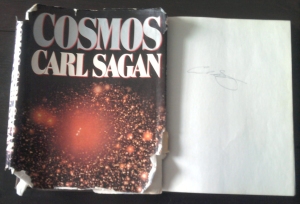
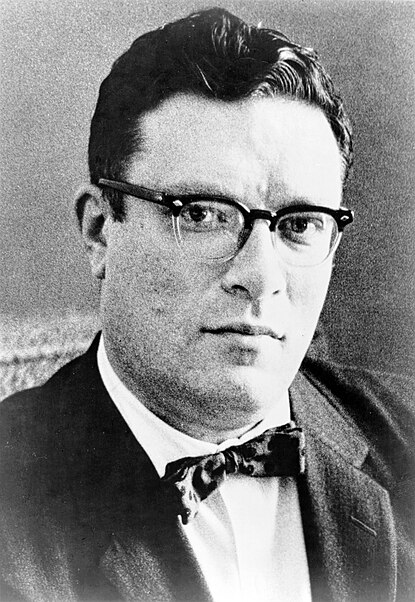 Of all the science fiction I read as a kid, the dominant force was Isaac Asimov. It seems only right that I should begin my series of pieces on the influences behind Johnny Mackintosh with this master of “hard” sci fi.
Of all the science fiction I read as a kid, the dominant force was Isaac Asimov. It seems only right that I should begin my series of pieces on the influences behind Johnny Mackintosh with this master of “hard” sci fi.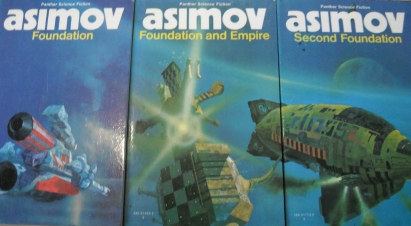


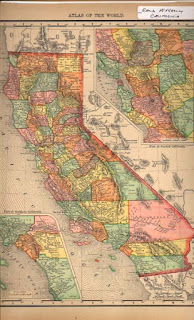 I love that one of Walter's picks is the Rand
I love that one of Walter's picks is the Rand 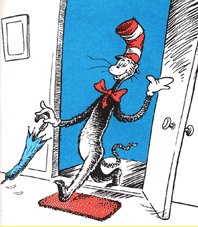
 I stared at those letters, and they began to make sense to me. I couldn't, and then suddenly I could -- I could read. I also could learn... all by myself. I could begin at the beginning -- with anything -- and start to decode it. This knowledge, this desire, has stayed with me all my life, and it is how I have approached learning -- begin at the beginning. What is the foundation of what I want to learn? Go back and find out. You'll see me do this as I write about more of my personal canon. This is a skill I've learned to use in my life with anything new I want to learn.
I stared at those letters, and they began to make sense to me. I couldn't, and then suddenly I could -- I could read. I also could learn... all by myself. I could begin at the beginning -- with anything -- and start to decode it. This knowledge, this desire, has stayed with me all my life, and it is how I have approached learning -- begin at the beginning. What is the foundation of what I want to learn? Go back and find out. You'll see me do this as I write about more of my personal canon. This is a skill I've learned to use in my life with anything new I want to learn.

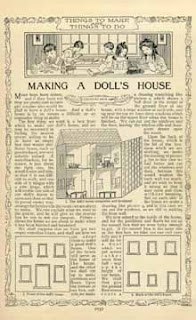



 It's hard to write fiction without first understanding your personal narrative -- who you are and where you are from. This is especially important to know when writing with children. It's hard for fourth-graders, say, or middle-schoolers (aren't they beautiful?) or seniors in high school to sustain a fictional world when they haven't explored their place in their own world, when they aren't telling their own stories and understanding that those stories have heft and meaning and importance.
It's hard to write fiction without first understanding your personal narrative -- who you are and where you are from. This is especially important to know when writing with children. It's hard for fourth-graders, say, or middle-schoolers (aren't they beautiful?) or seniors in high school to sustain a fictional world when they haven't explored their place in their own world, when they aren't telling their own stories and understanding that those stories have heft and meaning and importance. One of the first assignments Nancy gave our class was to write about a place. She had us LIST places first -- places we had lived, visited -- every place we could remember, large (Mississippi), small (the fort I made under the stairs), it didn't matter -- but a physical place.
One of the first assignments Nancy gave our class was to write about a place. She had us LIST places first -- places we had lived, visited -- every place we could remember, large (Mississippi), small (the fort I made under the stairs), it didn't matter -- but a physical place.
 Don't skip the listing step. I still, to this day, begin writing by listing. When I listed for this exercise, "Mississippi" was the word I circled. It was the place I chose to write about. I narrowed it down to Jasper County, Mississippi, and all the summers I spent there with my grandmother (the real Miss Eula), surrounded by the smells of summer and people who would populate my dreams for years to come.
Don't skip the listing step. I still, to this day, begin writing by listing. When I listed for this exercise, "Mississippi" was the word I circled. It was the place I chose to write about. I narrowed it down to Jasper County, Mississippi, and all the summers I spent there with my grandmother (the real Miss Eula), surrounded by the smells of summer and people who would populate my dreams for years to come.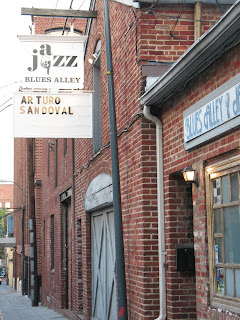
 Two years into working with Liz on this picture book, she still had not bought it, the story got longer and longer, and I found myself writing a novel instead of a picture book. Liz gave me good advice at this point: "Let go of your memories, and tell me a story." And I learned to do that, to make that fictional leap. But all my memories -- all those lists -- were trusses for my stories. Without them, I would have no stories to tell.
Two years into working with Liz on this picture book, she still had not bought it, the story got longer and longer, and I found myself writing a novel instead of a picture book. Liz gave me good advice at this point: "Let go of your memories, and tell me a story." And I learned to do that, to make that fictional leap. But all my memories -- all those lists -- were trusses for my stories. Without them, I would have no stories to tell. So.... what places do you know? And which one would you choose to write about today? It doesn't have to be a novel. Or even a picture book. How about a sketch? A poem? One paragraph of one moment in time you experienced in that place?
So.... what places do you know? And which one would you choose to write about today? It doesn't have to be a novel. Or even a picture book. How about a sketch? A poem? One paragraph of one moment in time you experienced in that place?



I don't have a teacher you helped me in writing...but I have one who was a great role model to me. She was caring and giving to everyone. She was so supportive of me and eventually my husband. She showed us how to be good parents.
Sister Mary Ralph, CSJ is the person, after my mother, to whom I credit my becoming a writer. Sr. Ralph saw in me a gift...a talent that was lying in wait for the right moment to bloom. She watered that gift with kind words of encouragement, rather than red X's through my work. She fertilized it with introductions to Robert Frost, Emily Dickinson, and Edna Vincent Millay to name a few.
I remember once, Sister Superior came into the class, asking us what we wanted to be when we grew up. I answered I would like to be a writer. Sr. Ralph in front of everyone in the class and Sr. Superior said, "But, Linda, you ARE a writer!" I was only ten, but those words stayed with me the rest of my life.
Great post, Elizabeth! Thanks for sharing!